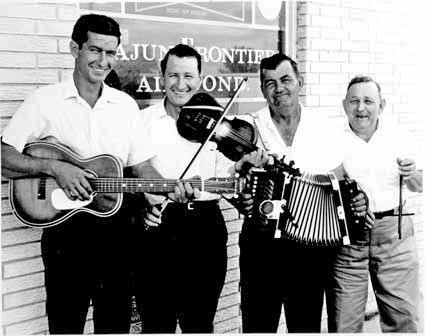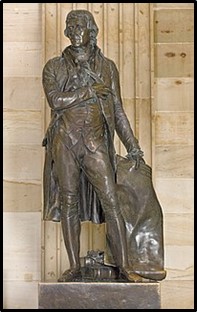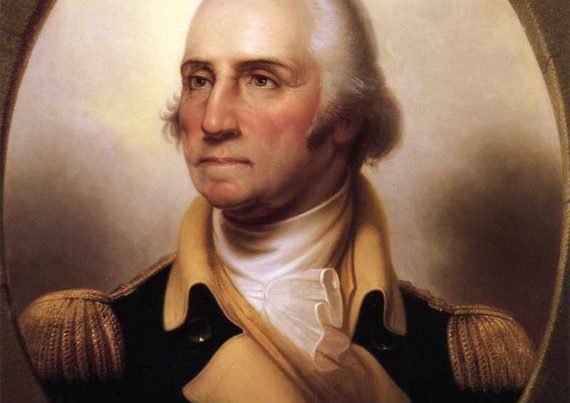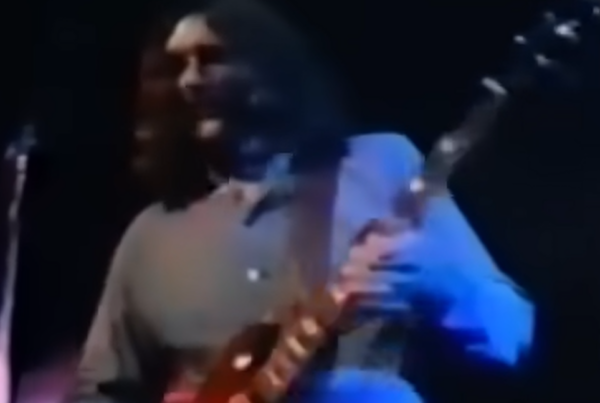
In a significant departure for this series, the 9th installment of What Makes This Musician Great will focus on a band instead of one musician, and more appropriately, a band of brothers. The Balfa Brothers were a Cajun band of real-life brothers Rodney, Dewey, Will, Harry, and Burkeman. They learned music from their father, who was a Louisiana sharecropper, and they started playing together in the 1940’s. Their names are not as big and showy as any of the other musicians featured in this series because their professional timing was terrible. They first began to perform and record Cajun music at a time when authentic Cajun had become “not cool,” and was being replaced by a more homogenized and progressive sound. Therefore, since the Balfa Brothers persisted with their old, traditional sound and stayed true to their roots, they represent the last, best surviving example of authentic Cajun music before the mass corruption of Cajun culture after World War II. Eventually, a Cajun cultural renaissance would take place in the late 1960’s, causing The Balfa Brothers to suddenly became a hot commodity with international appeal. I had a chance to see The Balfa Brothers in the Spring of 1978, and I missed it. They were performing at a Cajun Festival near New Orleans, and my high school Jazz band was there at the same time performing in a separate Jazz festival. I had never heard of The Balfa Brothers, but the photo in the newspaper caught my attention – it’s the photo seen with this article. I was intrigued and conflicted, because something was pulling at my love of music to go and see this group at all costs, but eventually my Jazz snobbery prevailed. They were Cajun, after all, and NOT Jazz, but I would never get another chance. Rodney and Will were killed in a car crash in 1979 near Bunkie, Louisiana, just as their careers were really starting to take off internationally.
In order to get a grip on what makes The Balfa Brothers so great, we must begin with a general explanation of Cajun music as a whole, and specifically, its origins and traditional sounds. Cajun music comes from southern Louisiana, and is a juicy gumbo of French folk music, Caribbean music, Scots-Irish Appalachian music, Native American music, Jewish-German music, and the Blues. Typically, Cajun music will mostly feature guitar, fiddle, accordion, and triangle, yet will also have some various other folk instruments thrown in for flavor.
The whole story goes all the way back to 18th century Canada when the Acadian people of eastern Canada were expelled by the British after the French and Indian War. As far as the British were concerned, the Acadians had two major strikes against them. First, they were French, and second, they were Catholic. Both of these characteristics made them terribly untrustworthy, so the British (and Puritan New Englanders) kicked them out. Over 11,000 Acadians were forcibly expelled from their homeland, and many of them migrated all the way around to Louisiana, which was still under Spanish rule at the time. The migrant Acadians specifically sought to settle anywhere that was both Catholic and allied with the French, so the isolation of southern Louisiana was perfect for them.
Although the Acadians watched as Louisiana changed hands from Spain to France, and then from France to the United States, their new American landlords seemed willing to leave them well-enough alone, and they were able to continue their lives and traditions untouched for many more decades. French Acadians were always proud of both their isolation and their impoverishment, and they didn’t really consider themselves to be part of the newly-formed Confederacy when it appeared in 1861. Furthermore, the Confederate government seemed willing to continue the policy of non-interference with the isolated, independent Acadian communities. However, that all began to change in 1862 when the Union captured New Orleans, and started a policy of forcibly assimilating French Acadians into American culture – a process that continued through Reconstruction. After all, every evil Southerner was the same, Confederate or not, right? Reconstruction imposed impossible living conditions on Southerners, leaving them broken, destitute, and fighting just to survive. In Louisiana, this brought all ethnic groups down to the already severely impoverished level of the Acadians, and they began to mix and intermarry with surrounding communities and ethnicities. This is where the people we know today as “Cajuns” come from. Although the Cajuns definitely descended from the isolated 18th century French Acadian migrants, they didn’t exist as a population until Reconstruction when the mixing and mingling began. It was during this same time that as the blood mingled, so did the music. Cajun music picked up the fiddle, accordion, and triangle from the Scots-Irish, the Germans, and the African Americans, and Cajun music was born along with the Cajun people.
Cajuns continued seeking isolation beyond Reconstruction, and largely remained successful at maintaining their cultural identity right up until World War II, at which point the general American culture once again invaded and diluted Cajun culture with “Americanization.” Cajun soldiers were highly valued for the fluency in French, yet they ironically lost a lot of French tradition and culture after the war as schools in Louisiana sought actively to eliminate the French language as a show of “progress.” Most Cajuns became bi-lingual in the 50’s and 60’s, speaking English at school and French at home, and new generations of Cajuns were born that, for the first time, did not speak French at all.
But what about the music? Most Cajun music can be divided into one of two main categories – Ballads or Dance music.
Cajun ballads reflect lament from the historic upheaval of the French Acadians by the British, and they often feature a mournful quality. Unfortunately, there are no known surviving authentic ballads of the actual expelled French Acadians, and any Cajun ballad known today is a hybrid. It would be awesome if someone could uncover some long-lost original Acadian ballad, but so far, it hasn’t happened. The most common instrumentation for a Cajun ballad was a vocalist and a guitar – and even the guitar was optional. Most Cajun ballads featured the popular recurring themes of lost love, betrayal, and death.
I have written before of the immense contributions made to Southern culture and music by early 20th century ethnomusicologists who literally wandered the countryside and recorded what they heard. Alan Lomax was just such a hero who recorded amateur renditions of Cajun ballads in southern Louisiana, allowing them to be captured and preserved indefinitely. The significance of those early recordings is that they represent an accurate snapshot of authentic Cajun culture right before the assimilation and “Americanization” of World War II. Those priceless recordings represent the last precious days of a purely Cajun culture, and became a treasured goldmine for contemporary Cajuns musicians seeking a reconnection with their past.
The second type of Cajun music is the popular and familiar style of Dance music, which is built around the concept known as fais do-do. An exact translation of “fais do-do” is not as functional as a general meaning, which is basically, “children, go to sleep, because the grown-ups have some grown-up things to do.” Therefore, Cajun Dance music would be played at a fais do-do, and pretty much any excuse for a Cajun to start dancing is going to be called a fais do-do. A fais do-do can be formal or informal, and it can be planned or totally impromptu. The full power of Cajun instrumentation can be found in the Dance music which includes influence from the Scots-Irish (fiddle), Native Americans (drone harmonies), African Americans (syncopation and percussion), and Jewish-German immigrants (accordion). It is through this type of authentic Cajun Dance music with which I will explore the sounds of The Balfa Brothers.
Cajun Dance music is recognizable for its famous shuffle beat. Little children learning how to play Cajun music are taught to play “fiddlesticks,” which is a technique of tapping wooden sticks directly onto a fiddle with a Cajun shuffle beat in order to feel it and learn it. This is a short clip of Dewey Balfa and his nephew giving a demonstration. You will be able to notice this same shuffle beat in all of the songs I present here for The Balfa Brothers.
The basic instrumentation of The Balfa Brothers consisted of Rodney on guitar and vocals, Dewey and Will on fiddles, Harry on accordion, and Burkeman on triangle. There were actually nine siblings in the whole family, and almost all of them played music. The Balfa Brothers performed off and on locally, but without any vision of a career or future in music. It was all just for fun. Dewey Balfa was always the musical ambassador of the family. He kept their profile high and visible by traveling and playing as a guest artist with many Cajun performers at a time when authentic Cajun music was considered to be an embarrassment. The early 60’s was a low period when Cajuns were ashamed of their own music, and they referred to it as “chank-a-chank.” Therefore, it was a little bit of a shock when Dewey was invited to perform at the Newport Folk Festival in 1964, alongside Joan Baez, Bob Dylan, and Peter, Paul, and Mary. But the real shock came when the audience of 17,000 – far from embarrassed or ashamed – gave him a long and resounding standing ovation. Dewey returned home from the experience an energized and changed man. He quickly reorganized The Balfa Brothers into an official full-time performance group, and they made it their mission to spread the Gospel of Cajun music to anyone who would listen. The Balfa Brothers became leading advocates for a revival of Cajun culture, and they were always available to play anywhere and everywhere Cajuns gathered. They were even invited back to Newport in 1967 to perform as an official band. Many contemporary Cajun revivalists learned their craft through The Balfa Brothers, but The Balfa Brothers learned it from the original Cajuns back in the bayou. Therefore, what makes them great? Listening to The Balfa Brothers is like a time warp back to authentic Cajun culture of the early 20th century before “Americanization.” Anything they recorded in the late 60’s and early 70’s is no different than the earliest authentic recordings made by Alan Lomax in the 1930’s – just better sound quality.
“Le Danse de Mardi Gras”
This is my personal favorite of all songs recorded by The Balfa Brothers. Rodney plays guitar and sings lead vocals, but all the brothers sing along, too, and everything is in French. You can hear the twin violins, the accordion, and especially the triangle, and the shuffle beat is prevalent. This song checks all the boxes for “authentic Cajun music.” Musically, the key is G Dorian (similar to G Minor, but with an E instead of an Eb in the scale), which is very common among ancient French Celtic songs. That suggests the melody of this tune COULD be from the expelled French Acadians, and is much older than the lyrics. It is basically three verses with an instrumental break at the beginning, end, and between each verse. There are no improvised solos.
“Parlez Nous a Boire”
The first time I heard this song was in the 1981 Keith Carradine/Powers Boothe movie “Southern Comfort,” and I would love to have included a clip from that film with this article, but it’s a little too graphic. The vocal high harmony in this song is a good example of the drone harmonies prevalent in Cajun music that were borrowed from Native American folk music.
“Oh Madeleine”
Dewey and Rodney are featured in this live performance clip, along with younger members of the Balfa extended family. Watch Rodney’s strumming hand on the guitar, and you can actually see the shuffle beat. It’s a “BOOM chuck-a BOOM chuck-a BOOM” type of beat, and that’s the classic Cajun shuffle. Everything in this clip confirms that all the good old stereotypes about Cajun music are true. Essentially, they never need a good reason to have a house party. Just break out the instruments and you’ve automatically got one.
At this point, I should take a moment to thank an Abbeville Institute colleague of mine, Kathryn Harpainter, for helping to fill in my knowledge gaps on Cajun music history. She pointed out that Cajun Festivals have started popping up all over southern Great Britain, and a kind of “parallel” Cajun culture has appeared in London, Wales, and Cornwall, where they have their own bands, record labels, and fan publications. The greatest irony, of course, is that it was the British who got this whole thing started by expelling the French Acadians in the first place 250 years ago.









